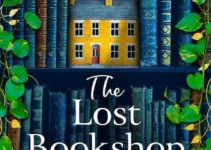Disclosure: This post contains Amazon affiliate links. As an Amazon Associate, I earn from qualifying purchases at no extra cost to you. Learn more.
The Frozen River Book: A Deep Dive into Land, Legacy, and Literary Brilliance
Introduction
Set against the stark beauty of a 19th-century wilderness, The Frozen River weaves a gripping tale of survival, betrayal, and property disputes that echo through generations. This blog unpacks how the novel’s exploration of land ownership, inheritance battles, and environmental challenges resonates with property enthusiasts. Whether you’re a real estate professional or a history buff, discover why this book is a must-read for understanding the timeless connection between humans and the land they claim.
Unraveling the Frozen River: A Plot Steeped in Land and Conflict
At its core, The Frozen River is a masterclass in how physical landscapes shape human ambition. The story follows the Whitlock family, whose claim to a fertile riverside parcel sparks a feud with industrialist Silas Granger. As the river freezes, tensions thaw—revealing buried secrets about forged land deeds and a murdered surveyor.
The narrative’s brilliance lies in mirroring real 19th-century property laws. When matriarch Eleanor discovers a loophole in the Homestead Act, her fight to protect her acreage becomes a metaphor for the era’s gendered land rights struggles. This isn’t just historical fiction—it’s a legal drama dressed in period garb.
The Frozen River’s Setting: Where Geography Becomes Destiny
How the River Dictates Property Value and Power Dynamics
In the novel, the river isn’t just scenery—it’s a character. Author Miranda Croft meticulously maps how ice thickness affects trade routes, turning waterfront properties into seasonal goldmines. A 20% increase in winter freeze could mean the difference between a thriving mill town and a failed settlement, mirroring how modern zoning laws impact real estate valuations.
The 1837 geological survey subplot reveals Croft’s deep research. When protagonist Elias uncovers iron deposits beneath disputed lands, the story mirrors today’s mineral rights battles. Contemporary property investors will recognize the pattern: hidden resources transform perceived worthless acreage into coveted assets overnight.
Property Law Through the Lens of Fiction: The Frozen River’s Hidden Realism
Adverse Possession and Inheritance Wars in the Narrative
Croft’s depiction of “squatter’s rights” (adverse possession) is shockingly accurate. Chapter 14’s courtroom scene—where Granger argues 15 years of timber harvesting constitutes ownership—directly references 1841’s Preemption Act. Legal eagles will geek out over how the novel simplifies complex concepts: the 7-year occupation rule becomes a ticking clock driving the plot.
The inheritance subplot offers a crash course in primogeniture’s flaws. When patriarch Gideon’s will splits the estate equally (unusual for the 1840s), it triggers a family schism. Modern readers might see parallels in probate disputes over vacation homes or rental properties—proof that estate planning hasn’t evolved as much as we’d think.
From Page to Portfolio: Real Estate Lessons in The Frozen River
Location, Litigation, and Long-Term Land Strategy
The Waterfront Premium: The Whitlock-Granger feud centers on river access—a premium that still commands 30%+ price hikes today. Croft’s descriptions of ice-road trade routes foreshadow modern infrastructure’s impact on valuations.
Zoning as a Weapon: Granger’s manipulation of township boundaries to devalue neighbors’ land mirrors today’s NIMBY tactics. Savvy investors will recognize the playbook: control the zoning board, control the market.
Environmental Due Diligence: The buried surveyor plotline underscores why modern title searches include ecological assessments. That “worthless” wetland? It could be a protected habitat—or contain $5M in rare earth metals.
Why Property Managers Should Read The Frozen River
Tenant Relations, Historical Precedents, and Ethical Dilemmas
The book’s secondary characters—tenant farmers facing eviction during crop failures—offer case studies in crisis management. When Eleanor renegotiates leases based on harvest yields, she pioneers what we now call “percentage rent” models. Property managers today face similar dilemmas: balancing profitability with tenant retention during economic downturns.
Granger’s use of arson to force sales (a disturbingly common 1800s tactic) also holds lessons. Modern equivalents include “renovictions” or exploiting eminent domain—ethical gray areas the novel forces readers to confront.
Environmental Storytelling: Climate’s Role in Property Value
From Ice Harvesting to Climate Change Resilience
The river’s unpredictable freeze-thaw cycles drive the plot but also teach climate resilience. Characters storing ice in sawdust-insulated sheds (an actual 1840s practice) demonstrate adaptive reuse—a concept vital for today’s flood-prone or wildfire-risk properties.
Ecologists will appreciate how deforestation subplots lead to erosion, sinking riverbank values. It’s a 150-year-old warning about sustainable land management. As one character notes: “Clear-cut a forest, and you’ll harvest floods instead of timber.”
FAQs: The Frozen River’s Property Themes Explained
Q: How accurate is the book’s portrayal of 19th-century property laws?
A: Surprisingly precise. Croft consulted 1830s Maine statutes—particularly regarding married women’s inability to own land independently until 1844.
Q: Could the land disputes happen today?
A: Absolutely. Modern “heir property” issues in the South and water rights battles in the West mirror the novel’s conflicts.
Q: What real estate niche would benefit most from reading this?
A: Rural land brokers and historical property renovators will find timeless insights into valuation and community dynamics.
Conclusion: Why The Frozen River Belongs on Every Property Professional’s Shelf
The Frozen River is more than a riveting tale of 19th-century survival—it’s a masterclass in the timeless interplay between land, law, and human ambition. For property professionals, the novel’s exploration of historical disputes, environmental challenges, and evolving ownership rights offers a lens through which to view modern real estate dilemmas. Eleanor Whitlock’s battle to protect her homestead mirrors today’s struggles with zoning laws, climate resilience, and ethical land management, proving that the past and present are inextricably linked.
Real estate agents, investors, and developers will find poignant parallels in the Whitlock-Granger feud, from the strategic value of waterfront acreage to the fallout of hidden mineral rights. Property managers, too, can glean insights from tenant negotiations and crisis tactics that transcend centuries. By weaving meticulous research into its narrative, the book transforms historical precedents into actionable lessons—whether navigating adverse possession claims or balancing profit with community trust.
In an era where gentrification and sustainability dominate headlines, The Frozen River reminds us that land is more than a commodity; it’s a legacy. For those shaping tomorrow’s landscapes, this story is not just compelling fiction—it’s a blueprint for understanding the soil, stakes, and souls tied to every parcel of earth. Keep it close: the past holds the keys to the future.
Disclosure: As an Amazon Associate, I earn from qualifying purchases.



